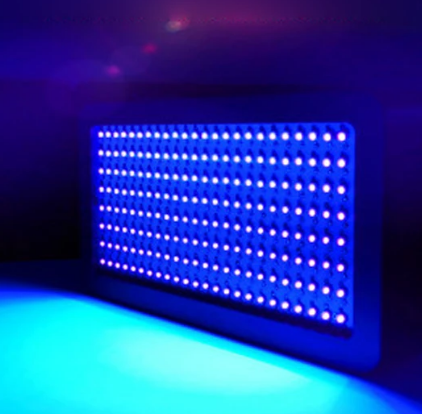Ultraviolet light is a kind of electromagnetic wave with high energy, which can be used for sterilization, disinfection, curing, detection and so on. The wavelength range of ultraviolet light is 10-400 nanometers, which can be divided into UVA (315-400 nanometers), UVB (280-315 nanometers), UVC (100-280 nanometers) and so on according to the wavelength.

Ultraviolet mercury lamps and LED lamps are two common ultraviolet light sources, which have their own advantages and disadvantages, and are suitable for different occasions and needs. Here are some of the differences between them:
- 1. Different light-emitting principles:
Ultraviolet mercury lamps emit ultraviolet light through the mercury vapor in the mercury lamp tube or bulb under the action of current, while LED lamps emit ultraviolet light through the semiconductor material in the ultraviolet LED bead under the action of current. - 2. Different ultraviolet spectra:
Ultraviolet mercury lamps emit continuous wavelength spectra, which generally have a large wavelength range, such as low-pressure mercury lamps mainly emit 254 nanometers and 185 nanometers of UVC light, high-pressure mercury lamps mainly emit 365 nanometers and 254 nanometers of UVA and UVC light. LED lamps generally emit single peak wavelength spectra, which can be adjusted according to different semiconductor materials and processes, such as emitting 280 nanometers, 310 nanometers, 365 nanometers, 395 nanometers and other different wavelengths of ultraviolet light. - 3. Different energy consumption:
Due to different light-emitting principles, LED lamps are more energy-saving and environmentally friendly than mercury lamps, with an electro-optical conversion efficiency of about 30%-50%, while mercury lamps have an electro-optical conversion efficiency of about 5%-10%. - 4. Different heat generation:
LED lamps are single peak wavelength, with more prominent effective parts than mercury lamps, and do not produce extra infrared wavelengths, so they do not produce extra heat radiation, which is more practical for heat-sensitive materials. Mercury lamps are continuous wavelength, in addition to ultraviolet light, they also produce visible light and infrared light, so they produce more heat radiation, which may cause damage to heat-sensitive materials. - 5. Different service life:
LED lamps have no fragile consumable parts, and their service life is generally between 10000-50000 hours, while mercury lamps have fragile consumable parts such as glass tubes or bulbs, and their service life is generally between 1000-5000 hours. - 6. Different environmental impacts:
LED lamps do not contain harmful elements such as mercury, lead and so on, and they have no pollution or harm to the environment after being discarded, and can be recycled. Mercury lamps contain harmful
